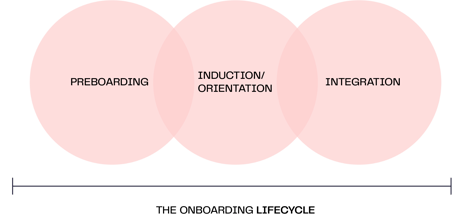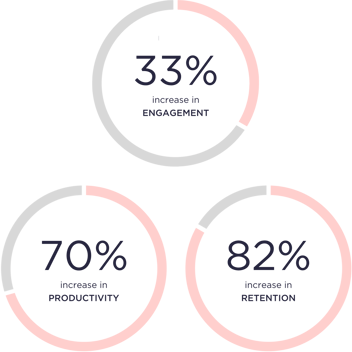The onboarding lifecycle. It’s a term we use a lot here at Talmundo - but it’s still reasonably new to the HR vocabulary, so we thought it was time we defined it...definitively!
 |
What is the onboarding lifecycle?
|
The onboarding lifecycle refers to a new hire’s journey from the moment they accept an offer of employment until they are fully integrated members of your organization.
Similarly to the employee lifecycle, the onboarding lifecycle comprises several ‘phases’, each of which offers a unique opportunity for HR to connect with recruits.
The length of the onboarding lifecycle will vary across different organizations, however, companies with an onboarding experience that extends beyond the 90-day mark achieve better results.
The onboarding lifecycle is named for the cyclical nature of the new hire journey. If you invest in your people now, they will stay longer, contribute more, and in turn, influence future new hires.
 |
What are the three phases of the onboarding lifecycle?
|
The onboarding lifecycle is broken into three distinct phases; preboarding, induction/orientation, and integration.

Let’s take a deeper look at each phase:
Phase 1: Preboarding
Preboarding is about engaging your newest hire from the moment they accept a job offer, through until their first day on the job.
The process is designed to manage new hires' first-day fears and expectations, provide them with the tools they need to be productive at an early stage, and ultimately drive engagement and long-term retention.
Phase 2: Induction/Orientation
Orientation and induction cover the first week (or weeks) of a new hires’ onboarding journey.
There are two main purposes: completing administrative processes that were started during the preboarding phase and welcoming your newest team member into the fold through social and cultural connections.
Phase 3: Integration
Integration is an extended process and can take anywhere from 3 months to a year - depending on the new hire and the organization.
Best-practice defines an employee as “fully integrated” when they have a strong understanding of their job and responsibilities, a growing social connection to their team and the wider organization, a good grasp of company policies, and can navigate the spoken and unspoken rules of their new workplace.
Onboarding ends when an employee has been successfully integrated.
 |
Why is the onboarding lifecycle important?
|
The onboarding lifecycle is like any good machine: only effective if every component is present and functional.
Unfortunately, many organizations stop short of providing value at every stage of the onboarding lifecycle. 64% offer no preboarding at all and more than 50% conclude their integration process after a few short weeks. Long term, this harms employee engagement, time-to-productivity, and retention.
The good news is, when HR commits to the full onboarding lifecycle, they see excellent results for both employees and the wider organization!

 |
The Takeaway
|
Onboarding isn’t an afterthought.
We see time and time again that HR’s key performance indicators (KPI’s) are positively impacted when organizations invest in the onboarding lifecycle. It makes great business sense and your new hires will thank you.
So what are you waiting for?
Want to learn how to deliver meaningful experiences at every stage of the onboarding lifecycle?
Try our 2023 whitepaper for future-proof ideas that impact engagement, time-to-productivity, and new hire retention.






